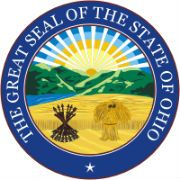Title Page
-
Conducted on
-
Prepared by
-
Location
Protecting Against COVID-19
-
Ohio Department of Health Director Amy Acton, M.D., MPH, recommends that all mass transit and other transportation providers take the following actions:
-
Implement policies and procedures for employees and passengers regarding the use of face coverings and personal protective equipment, such as gloves.
-
Display appropriate signage and information for travelers in transportation hubs.
-
Establish additional hand sanitization stations at transportation hubs and stations.
-
Create physical distance between transit facility employees, operators, and passengers.
-
- Implement a system to maintain a space of 6 feet between people, including passengers. This could include use of physical partitions or visual cues, such as floor decals, colored tape, or signs.
-
- Use Plexiglas barriers for ticket sales and drivers.
-
- Encourage tap-and-pay or electronic payment systems to limit handling of cash.
-
- Control heating, ventilation, and air conditioning to reduce the spread of contamination.
-
Encourage employees to conduct routine laundering of work clothes/uniform.
-
Enhance sanitization procedures for high-touch surfaces, using EPA-approved disinfectants. Also frequently clean employee break/rest areas and other common areas. High-touch areas could include: driver areas, door handles, poles, grab bars, handrails, seats, arm rests, seat belt buckles, light and air controls, and adjacent walls and windows. Other such areas could include digital interfaces (such as touchscreens and fingerprint scanners), fareboxes, kiosks, ticket machines, turnstiles, benches, garbage cans, payphones, restroom surfaces, wheelchair handles, motorized carts, elevator buttons, maps, and communication system devices.
-
Provide employees access to soap, clean running water, and drying materials or alcohol-based hand sanitizers containing at least 60% alcohol. Provide disposable disinfectant wipes so that employees can wipe down commonly touched surfaces. Provide employees tissues and no-touch disposal receptacles.
-
Implement policies and procedures to provide sufficient opportunities for employees to frequently clean hands and to ensure transit vehicles and facilities are appropriately cleaned.
-
At minimum, employees should clean hands:
-
- Before, during, and after preparing food.
-
- Before eating food.
-
- After using the bathroom.
-
- After nose blowing, coughing, or sneezing.
-
- Before and after work shifts.
-
- Before and after work breaks.
-
- After touching frequently touched surfaces or handling passengers’ items.
-
Actively encourage sick employees to stay home. Implement flexible sick leave and supportive policies and practices. Consider drafting non-punitive emergency sick leave policies.
Completion
-
Comments
-
Name and Signature
















